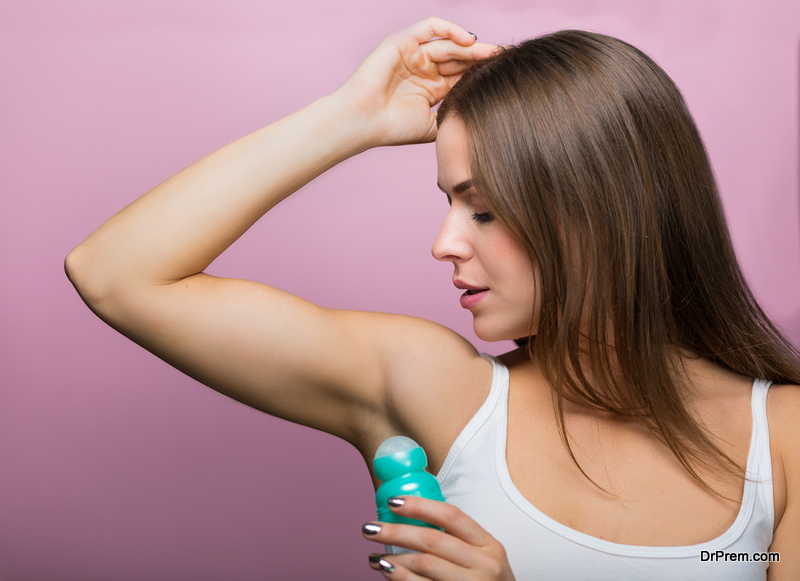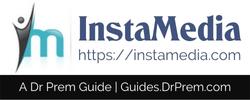Biometrics is fast replacing passwords that have to be typed in to authenticate your identity. You no longer have to remember anything to access your phone, home and more. Hacking is a threat for information, and with technologies such as fingerprint, voice and face recognition seem to be more secure. Let’s take a look at the future of biometrics, the emerging technologies as well as the latest trends:
Upcoming Biometric Technologies
The latest biometric technologies are at various stages of the development. Some might be commercially available in 2 to 4 years and others will take quite a few years to be really useful, while some will probably never see the light of the day.
1. Vein Scan
 Vein Scan is one of the emerging biometric technologies, which would be able to identify people from the blood vessel pattern on the back of the hand. The technology used is infrared light which can detect the veins’ blood vessels. Vein patterns might prove to be one of the best and secure ways for authentication, as they are distinctive even between twins, as well as the right and left hands of the person.
Vein Scan is one of the emerging biometric technologies, which would be able to identify people from the blood vessel pattern on the back of the hand. The technology used is infrared light which can detect the veins’ blood vessels. Vein patterns might prove to be one of the best and secure ways for authentication, as they are distinctive even between twins, as well as the right and left hands of the person.
Vein patterns develop at birth and are highly robust and stable, changing only in overall size. The technology is a non-intrusive technology, works even when the hand isn’t clean and right now, it is commercially available. It may soon be the ruling biometric tech in the coming years.
2. DNA Matching
 DNA Matching is one of the upcoming biometric technology which uses physiological characteristics for identification. It is supposed to be ultimate in biometric technology, as it can produce the proof-positive ID of a person, excepting identical twins. This is not a non-intrusive technology, as it will need actual samples and the authentication process will take a long time too, as it is real time comparison is not possible right now.
DNA Matching is one of the upcoming biometric technology which uses physiological characteristics for identification. It is supposed to be ultimate in biometric technology, as it can produce the proof-positive ID of a person, excepting identical twins. This is not a non-intrusive technology, as it will need actual samples and the authentication process will take a long time too, as it is real time comparison is not possible right now.
3. Facial Thermography
 This technology detects the heat patterns which are created by the branching of the blood vessels and this heat pattern is emitted by the skin. The patterns are known as thermograms and are very distinctive. These heat patterns are known as thermograms and are completely unique, just like vein patterns. This is one of the emerging biometric technologies, which is non-intrusive. An infrared camera would be used to capture images. This tech has an edge over the rivals as the cameras can work efficiently even in dim light.
This technology detects the heat patterns which are created by the branching of the blood vessels and this heat pattern is emitted by the skin. The patterns are known as thermograms and are very distinctive. These heat patterns are known as thermograms and are completely unique, just like vein patterns. This is one of the emerging biometric technologies, which is non-intrusive. An infrared camera would be used to capture images. This tech has an edge over the rivals as the cameras can work efficiently even in dim light.
4. Body Odor
 An upcoming biometric technology is body odor. There is research going on about this technology, and an odor sensing instrument would be used, (think of an electronic nose), to capture volatile chemicals which the human skin releases. Developing this tech is complex as people use deodorants, perfumes, medication which might influence the efficacy of the electronic nose.
An upcoming biometric technology is body odor. There is research going on about this technology, and an odor sensing instrument would be used, (think of an electronic nose), to capture volatile chemicals which the human skin releases. Developing this tech is complex as people use deodorants, perfumes, medication which might influence the efficacy of the electronic nose.
Gait recognition, Nailbed Identification and Ear Shape recognition are the other biometric identification methods which are being worked on by scientists. There is no clear idea about the time when these techs would be commercially available.
Emerging Biometric Trends
Biometric technology will soon be deeply embedded in our lives, whether we realize it or not, or are in favor of it or not. The easy and authentic identification of a person, make it easier to access personal information not only to access the smartphone, but also medical records get through airport security faster with single token biometric passports which are some of the future applications.
1. Provides security with comfort
 The multiple techniques currently being used are for applications such as access control, identity management, forensic identification and authentication. The techniques are accurate and convenient from the individual and tech implementation standpoint.
The multiple techniques currently being used are for applications such as access control, identity management, forensic identification and authentication. The techniques are accurate and convenient from the individual and tech implementation standpoint.
2. Cloud Based biometric tech
This is the latest innovation for the secure authentication which offers all the advantages of biometric tech while increasing security of information and addressing id theft. Biometric information is not stored in a central server, but instead on cloud, which authenticates credentials and shares authentication status with the connected device.
3. Behavioral biometrics
 Physical biometrics that focuses on the physiological or physical traits is complemented by behavior biometrics. Behaviors are unique to a person and companies such as Behaviorsec and NuData are working on this area, to heighten the security.
Physical biometrics that focuses on the physiological or physical traits is complemented by behavior biometrics. Behaviors are unique to a person and companies such as Behaviorsec and NuData are working on this area, to heighten the security.
NuData allows companies to identify behaviors such as finger pressure on screen, angle of phone and key stroke rhythm along with the physical fingerprint to authenticate. These types of biometrics are being developed due to the recent scares where physical biometrics were hacked into.
4. Palm vein recognition
This biometric system is surprisingly mature, and Fujitsu has been selling this for many years now. The veins of palms and fingers are unique to every individual, so alongwith facial recognition, systems like the PalmSecure from Fujitsu, are suing palm vein recognition to authenticate, especially in retail sales.
5. Heart
 The electrocardiograph signals which are produced by the person’s heart happen to be unique. A company which is experimenting with this biometric system is Bionym. Bionym is developing Nymi, which is small and wearable and would use ECG to authenticate identity.
The electrocardiograph signals which are produced by the person’s heart happen to be unique. A company which is experimenting with this biometric system is Bionym. Bionym is developing Nymi, which is small and wearable and would use ECG to authenticate identity.
What does the future hold?
Due to passwords being relatively easy to hack and also due to users’ lack of pass etiquette, biometric recognition techniques are being developed. However, as physical biometrics can also be copied and hacked, the trend for the future is to develop behavioral and other biometrics such as palm vein and ECG recognition to be used in tandem with physical biometrics for greater security.


